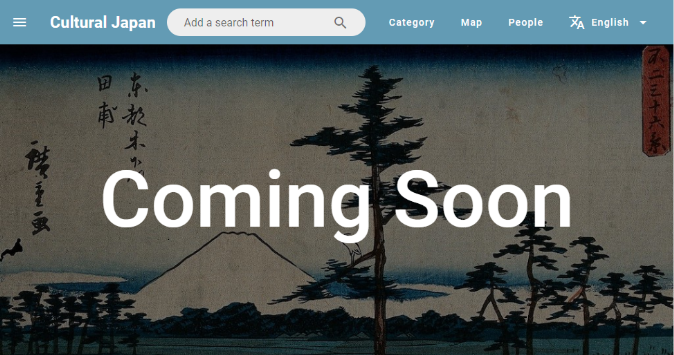 music & knowledge sharing
music & knowledge sharing
Japan Search: Multi-source Portal
- Japan Search aggregates many heterogeneous sources
- Japan Search (JPS), launched March 2019, aggregates nearly 20 million CH metadata items
- Its 70 data sources are quite heterogeneous: art museums, libraries, archives, science museums, literature research databases...
- 90% of items are also converted to RDF and provided through SPARQL endpoint
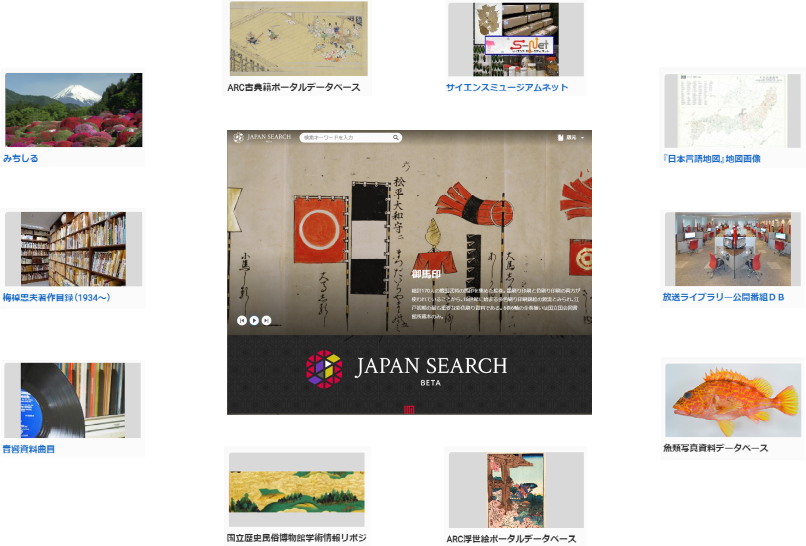
Japan Search RDF Model
- Access and Source information are distinguished
- Item metadata is described with dual layered structure (Schema.org + own vocabulary) which works both for simple search and detailed reference, and
- separated from the information of Access to actual item and related data (e.g. IIIF manifests)
- and that of the Source provider, its landing page and provenance of data
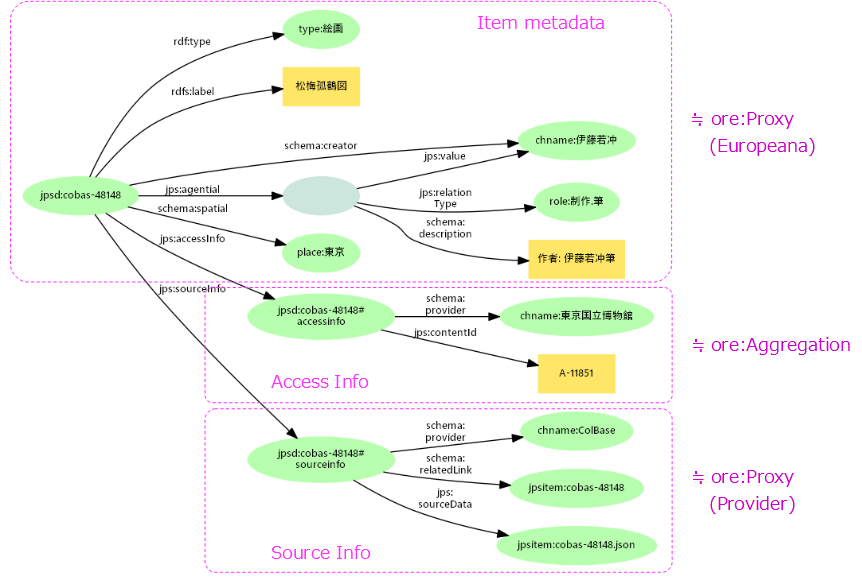
IIIF in Japan Search RDF
- IIIF manifests are described in Access Info
- Access info describes the holding institute, its location, digitized materials etc. to access the item.
- It uses schema:url to show related information (including IIIF manifest, if presentes)
- IIIF manifest URIs are assigned sc:Manifest type in order to distinguish from other type of resources
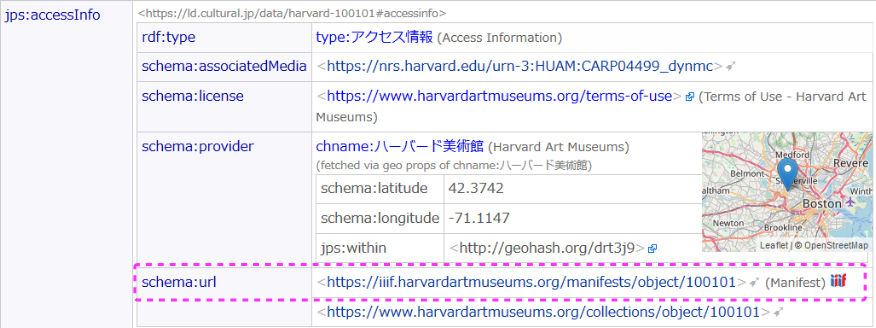
Japan Search data mapping
- Common labels and RDF mapping
- JPS aggregates source data as is: simply converts to JSON with common labels info
- Then generates RDF with normalization dictionaries and mapping definition
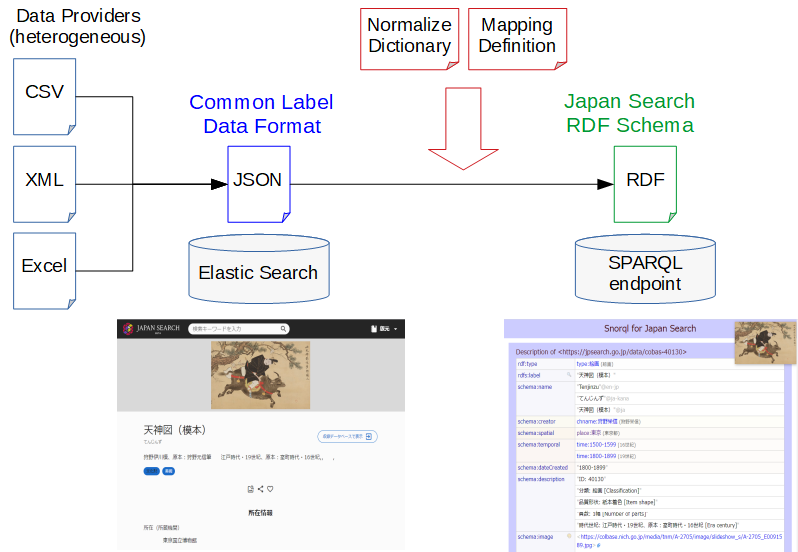
Open Access Data and Japan Search RDF Model
- The same process can be applied to any data
- Most JSON (incl. REST API) data can be used as is. CSV simply to be converted to JSON
- Then prepare mapping definition for each dataset. Works well for most CH data.
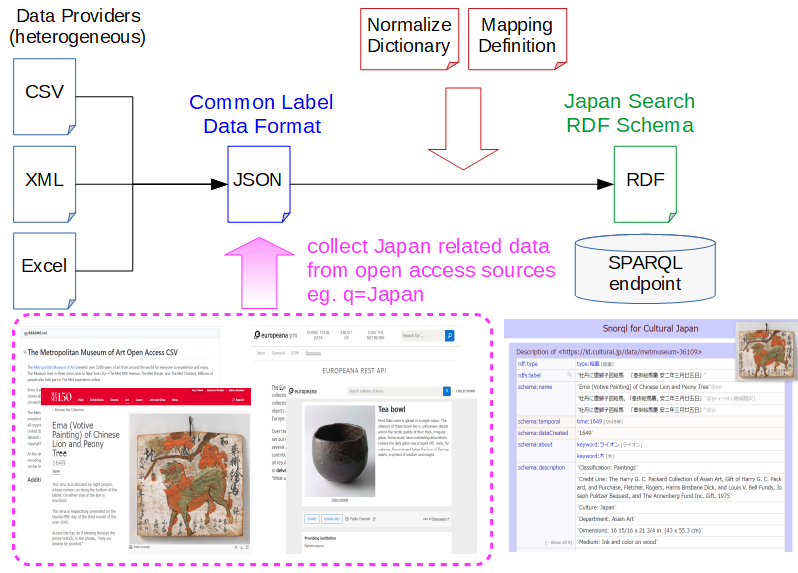
Cultural Japan: RDF from around the World
- World GLAM metadata + Japan Search = Cultural Japan
- RDF generated from a dozen of leading CH institutions, plus Europeana and DPLA APIs
- also, more RDF generated from 123 thousands of IIIF manifests (to be explained later)
- further, merged with JPS RDF of Japanese cultural works (= same data model)
- More than a million items of Japanese cultural works, from some 680 institutions world wide
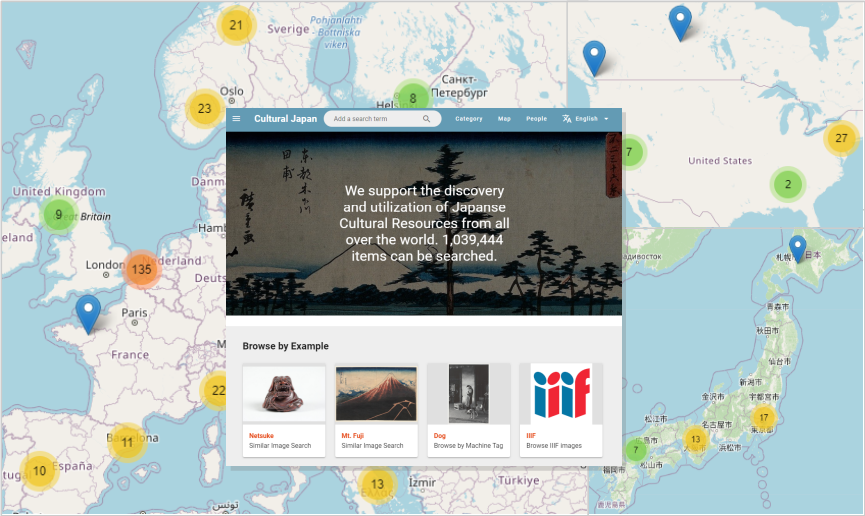
Now, IIIF Metadata to RDF
- Integrating metadata in IIIF manifest to RDF
metadata property in IIIF manifest is only for display purpose- different metadata
labels, non-normalized values = similar to souce data of Japan Search
- then, map those
metadata to "common label JSON" so as to convert to Japan Search RDF
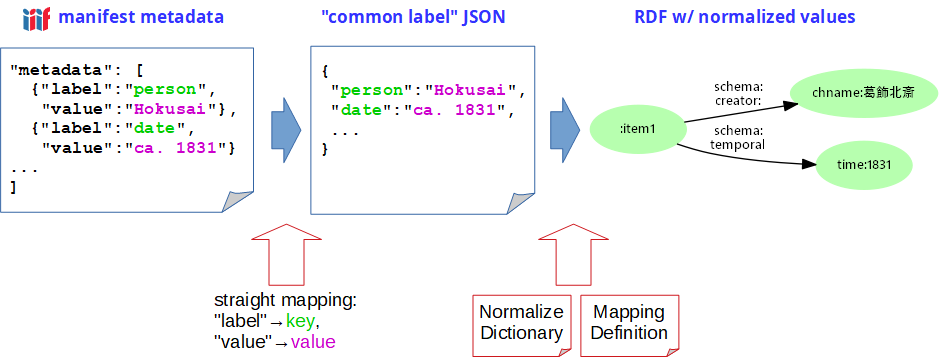
Mapping from IIIF Discovery Japan
- Mapping varied IIIF manifests metadata to RDF
- IIIF Discovery Japan aggregates manifests from some 50 sources
- Each source has its own
metadata labels
- map to a unified "common label JSON" with a mapping dictionary
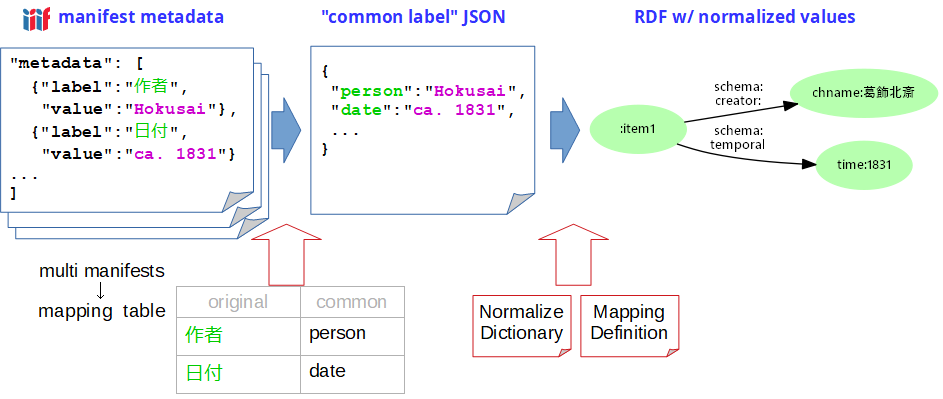
- Mapping strategy
- Identify all
metadata labels from 50 sources (423 found)
- sorted out and integrated them into some 50 pseudo common labels (30 major labels)
- then prepared one large RDF mapping definition
- Could have one RDF mapping for each, but unified mapping is easier when many sources
Flexible Discovery of IIIF through RDF
- SPARQL query for IIIF
- Much more flexible and precise discovery of IIIF contents by SPARQL query
- Cultural Japan search & presentation internally uses SPARQL in many ways
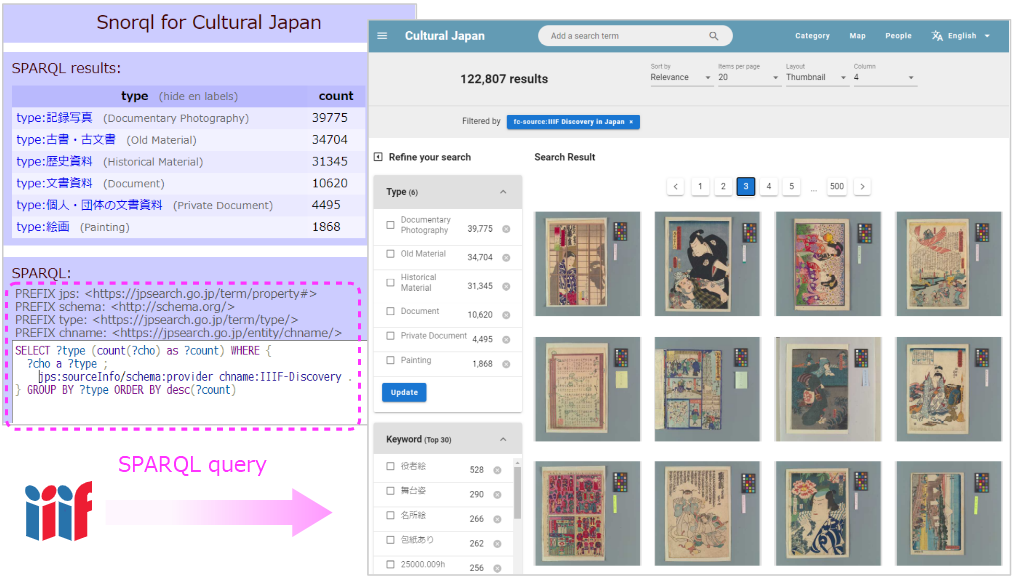
Conclusion
- Japan Search RDF model applicable to any CH work
- Flexible model with access/source info separation
- Source data aggregated as is (low entry barrier)
- Any CH work data can be converted to this model → Cultural Japan
- IIIF metadata could be more discoverable with RDF
- IIIF manifest
metadata can be converted to "common label" JSON
- then generate Japan Search model RDF
- full power of RDF/SPARQL plus rich IIIF presentation
- All integrated into Cultural Japan
